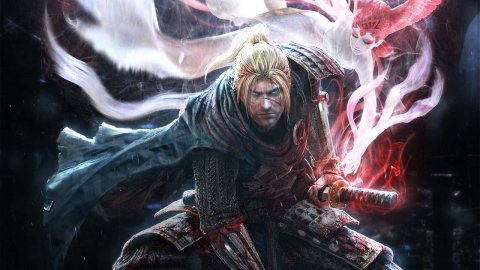Nioh Remastered, the analysis of the first chapter included in the Nioh Collection

Japan of the demons
What distinguishes the first Nioh from its sequel, before all the small differences in gameplay, is the approach to a narrative that involved a single and specific protagonist. No editor, no need to have silent protagonists or freedom of gender choices.William, this is his name, is an English man, statuesque, who finds himself on the spite of being catapulted to the other side of the known world . A world made up of splendid panoramas that in an instant are able to transform from heaven to hell, figuratively and beyond. A few minutes on the island are enough to find yourself face to face with the first yokai, demons of Japanese folklore who represent at the same time the biggest threat and the most fascinating element of the entire production.
In the course of about twenty main missions (not counting the three DLCs) and in half a dozen different regions, William will unearth some hidden secrets, crossing the sword with some of the most important historical and mythological figures in Japanese history.
Debut gameplay
Nioh has brought a breath of fresh air to the archetype of the souls-like genre. In 2017, when it first arrived on physical and digital shelves, no one believed so deeply in its potential, despite a couple of trial periods that in the previous months had smelled the good work of the Japanese team.The main consideration was always that no one was able to create anything comparable to From Software's work and it is precisely on the basis of this thought that the team probably worked. Taking the foundations of a genre that has already become legend, to merge it with something even more dated, so as to give new life to the whole. From this assumption Nioh was born, a strange hybrid halfway between Dark Souls and Diablo, perhaps even more brutal than the first, but certainly more light-hearted and interested in compulsive farming, as well as the second.
Creating the perfect build on Nioh is the real purpose of his own endgame, where the conclusion of the campaign is nothing more than the end of the journey and the beginning of the epic. Twilight missions, equipment rarity, new game plus, Abyss and all that follows represent the elements that have made Nioh unbearable for some and irreplaceable for others, so much so that still several people even play the first chapter in search of the perfect set .
Net of some elements that may or may not be in their own strings, the first Nioh laid the foundations for that digression on the theme that has managed, for some, to even take the place of the most reference, entering by right in the cult that will remain for years.
The remastered
Speaking specifically of what concerns the remastering for PS5, we are not so far from what has already been said for its sequel. Here too we have the possibility to choose between three different technical options: the first allows us to enjoy the game in 1080p and 60fps, excellent for all those who still do not have a 1440p or higher monitor. The second, still our favorite, allows you to play Nioh remastered up to 4K and 60fps. In this specific case, it seemed to us that some decline occurred, but never something that could really think of making the gameplay less enjoyable, making it in our opinion the most appropriate choice. Finally, the brand new possibility to push the gameplay up to 120fps, obviously going down from the point of view of resolution. Honestly we continue to consider this solution interesting but also superfluous, especially where it is possible to choose for a perfect compromise with that of 4K60.Speaking of the mere comparison with the remastered of the second chapter, this one seemed slightly less fluid on the whole, perhaps thanks to a certainly lower general quality of the particles. On the other hand, this element was also at the base of the improvements of the basic version of Nioh 2, making the first chapter less sparkling and beautiful in general. Here too nothing striking, especially given the total lack of willingness of the production to push on the purely technical aspect, always in the background with respect to the artistic one.
Let's close with a mention of the exploitation of the new Dualsense, the PS5 pad so acclaimed and that everyone seems to want to emulate in some way. The management of the vibration and resistance of the triggers is interesting, which changes the perception of the pad in the hand when you are holding a weapon at a distance. This allows us to grasp the sensation of the drawn arc, as well as the haptic feedback returns great physicality on the blows, an element that we have perceived a lot especially having the fresh experience of Nioh 2 complete edition on PC, not remotely comparable.